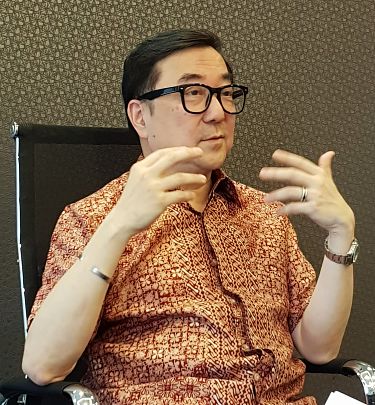|
On two counts, EC World REIT sticks out in the table below which compares it with two peers:
Motley Fool's article on EC World REIT last week cited S&P Global Market Intelligence data which painted a broader picture of the rewards of REITs and how EC World currently compares. The average distribution yield of all 39 Singapore-listed REITs is 6.36% (EC World: 7.95%). And their average price to book is 0.99 (EC World REIT: 0.86). Over time, EC World REIT's unit price could trend up as (1) the REIT communicates further with the market, (2) its China discount is overcome by the qualities of its assets and China's growth story, and (3) a rising distribution per unit (DPU). The REIT's investment merits, according to the management, include: ♦ 100% occupancy of all its six assets: Thus, its income is certain, at least for the duration of the multi-year leases; ♦ "Stickiness" of the businesses of its tenants: Their operations cannot be easily uprooted, if at all, and migrated to another place; ♦ Specialised nature of the REIT's assets: They cater to e-commerce fulfillment (ie, they are not ordinary warehouses used for storage) and to port operations and logistics.
"Compared to REITs owning traditional warehouses and, for example, Keppel DC REIT which hosts data centres, we are somewhere in between at this moment. "But now the market is valuing us as an ordinary industrial REIT. We are hoping the market would begin to realise what we are and move us along that scale." If the market nudges the unit price up to its NAV (90 cents), the implied yield is 6.84%, based on the annualised DPU of 6.16 cents for 2017. The unit price would almost certainly rise when the REIT makes acquistions that are DPU-accretive. Mr Cheng said that it is actively considering acquiring assets owned not only by the sponsor but third parties also. An acquisition is likely to materialise in the near term but he wouldn't disclose a timeline. The REIT has a gearing of 29%, so it has significant headroom for borrowings to make acquisitions before it reaches its allowed limit of 45%. |
What the 3 REITs mentioned in the above table have in common are real-estate assets which are "specialised". Briefly:
| ♦ Keppel DC REIT: Portfolio comprises 13 high-quality data centres in seven countries in Asia Pacific and Europe. ♦ First REIT: Portfolio consists of 19 properties in Indonesia, Singapore and South Korea that are primarily used for healthcare and / or healthcare-related purposes. ♦ Parkway Life REIT: Portfolio consists of 49 properties in the AsiaPacific region, including three hospitals in Singapore, 45 healthcare and healthcare-related assets in Japan and strata titled units/lots in Gleneagles Intan Medical Centre, Kuala Lumpur, Malaysia. |
Arguably, EC World REIT also has assets which are specialised in nature to a material degree:
E-Commerce Logistics
As for EC World REIT, it owns a warehouse and a business park for e-commerce logistics in Hangzhou, home also to the global HQ of Alibaba and regional HQ of Baidu, JD.com and Tencent.
Hangzhou, in fact, is one of the largest e-commerce hubs in China, with a market coverage of highly active Chinese cities in e-commerce such as Shanghai and Ningbo.
There are more than 470,000 online business entities in Hangzhou (according to Colliers).
| • Stage 1 Properties of Bei Gang Logistics: Comprises eight buildings, offering e-commerce-related services, logistics, trade and exhibition, O2O (online-to-offline) offices, talent training and financial services. • Fu Heng Warehouse: Being used as an e-commerce distribution centre and comprises two four-storey buildings with functions including warehousing, third party logistics, parcel producing and sorting, e-commerce business offices and O2O (online-to-offline) product showrooms and exhibitions. |
The REIT's Fu Heng Warehouse and Stage 1 Properties of Bei Gang Logistics are located within an integrated e-commerce industry cluster in the north and south of Hangzhou, respectively. (See infobox for some details)
Fu Heng Warehouse hosts the e-commerce operations of “Ruyicang”, the e-commerce logistics operator of the REIT's sponsor, so there is a special stickiness that the REIT's unit holders can have confidence in. Ruyicang is a leading e-commerce logistics / warehouse management operator in China.
Specialised Logistics
EC World REIT has a warehouse, Hengde Logistics, which is unlike ordinary warehouses: It was built to meet specific requirements of housing high-value consumer goods such as tobacco, wine and cosmetics.
Currently, tobacco products -- including tobacco leaves which need to be aged over two years -- estimated to be worth RMB10 billion are exclusively stored in this warehouse.
Key highlights:
♦ The warehouse is leased to a state-owned enterprise, tobacco manufacturer China Tobacco Zhejiang Industrial Co., Ltd.
♦ Equipped with advanced and comprehensive facilities including temperature and humidity control systems, dust-free configurations, and automatic sprinkler and fire alarm systems etc.
At this juncture, before this article goes on to describe the port assets of the REIT, watch this video for more clarity into the REIT's assets and the growth story -->
Port Logistics
Chongxian Port Investment (崇贤港投资) is the largest inland port in Hangzhou, enjoying a rising throughput of steel products because smaller ports have been closed. It accounts for about 60% of the throughput of steel products in Hangzhou.
Then there is Chongxian Port Logistics (崇贤港物流) which is an integrated complex with warehouses and office buildings which support the operations of Chongxian Port Investment, and is one of the largest metal warehouse and logistics developments in the Yangtze River Delta.
The sixth asset, Fu Zhuo Industrial, comprises berths and office buildings and is located next to Chongxian Port Investment.
| In this article, we sought to avoid information overload. Investors would do well, after catching their breath, to hop on next to: • EC World REIT's 35-page presentation material on the SGX website • The REIT's website • The SGX kopi-C article on Alvin Cheng and the REIT: EC World REIT Rides E-Commerce Boom |




